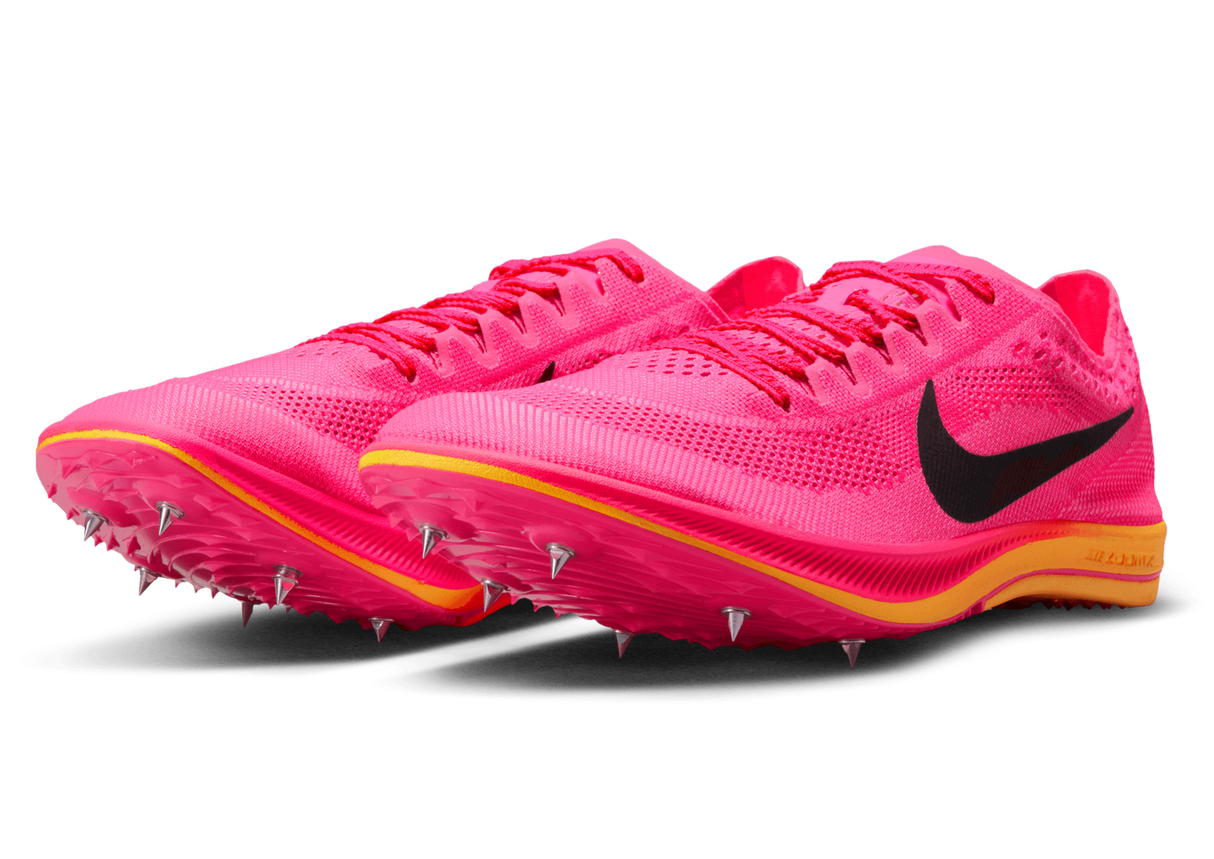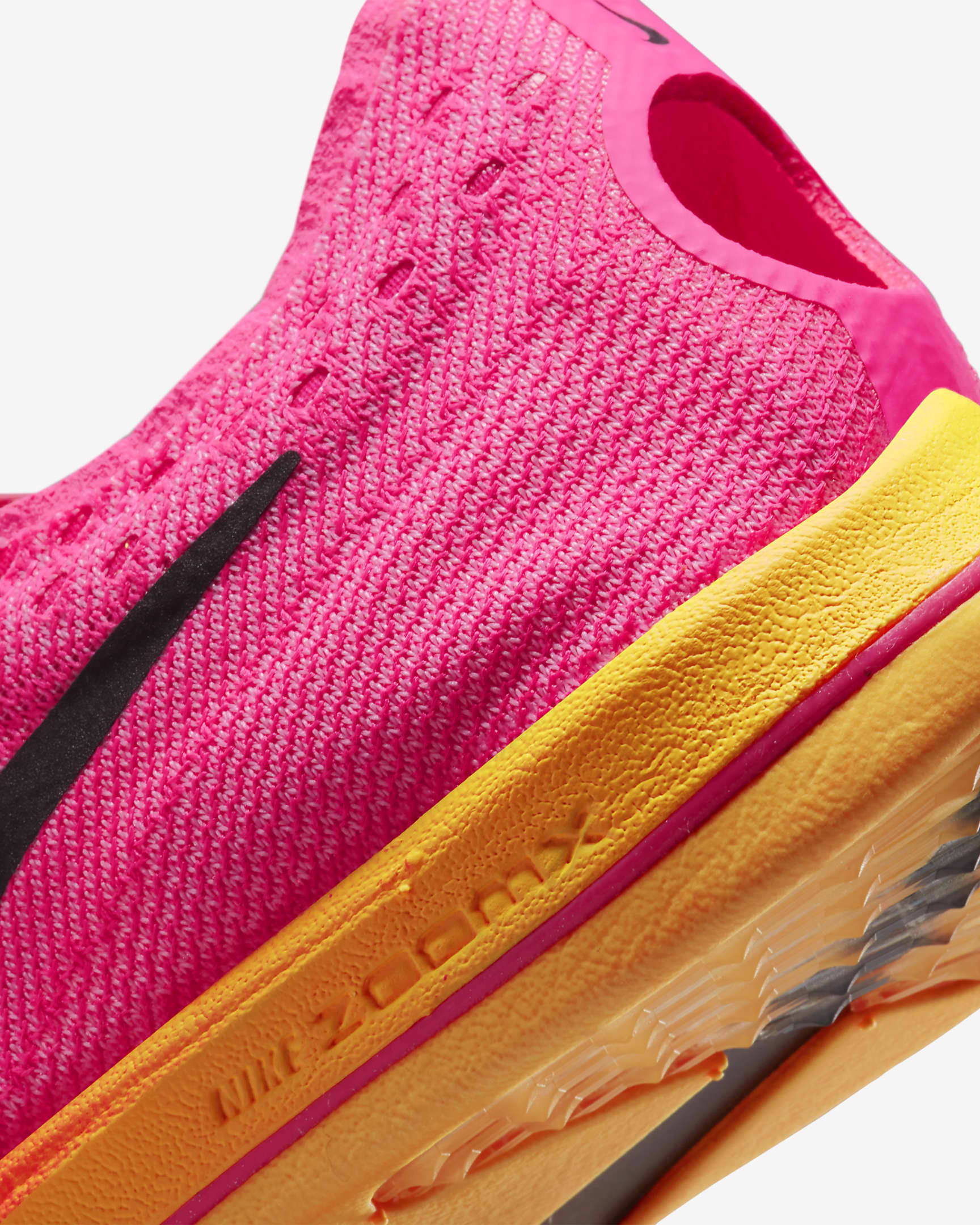Track Spikes : Nike Dragonfly Review
NIKE ZOOMX DRAGONFLY "HYPER PINK"
- $160 from Nike
The dragonfly is Nike's current top of the line distance track spike, released in 2020. For a pretty hefty price of 160 dollars this spike is packed with Nike's best technologies for the 1,500 meter to 10,000 meter races. Below, I'll cover this tech and what it does.
The Upper
The upper of the spike is constructed of a lightweight and breathable mesh that is almost see through is some areas. This mesh allows for excellent air flow, while not sacrificing durability or adding unnecessary weight. There is some additional padding around the collar of the shoe, along with a cutout in the heel area that helps lock the heel into place and cause the shoe not to slip around on foot. Another feature I enjoyed about this shoe was the speed laces that are used to secure the upper. These laces do a great job at holding the upper tight and stay tied pretty well. Never once while running did these laces come loose or untied, which is impressive especially after doing multiple long distance races. Combined, these features make the upper very comfortable and great for racing.
The Plate and Spikes
One of the key features that makes these spikes so quick on the track is its full length pebax plate. Pebax is a plastic used due to its durable properties and "pop," or the energy return that the plate gives the runner. When the runner contacts the ground and bends their foot, they put pressure, or "loads" the plate. The plate is naturally stiff and wants to bend back into its original shape, returning energy back into the runner's stride, making them faster. When I wore these while running the 3200meter I could definitely feel the energy return coming from the shoes. I felt "springy" while pushing off from the ground and during the final 800 meters I felt a bit more energy in my legs even though I was running the first laps faster than normal.
On the bottom of the shoe we have a continuation of the Pebax plate along with a small amount of zoomx foam on the heel half of the shoe. Another great feature is the 6 studded spike plate. Many spikes only come with 4 or 5 spike holes, but 6 spikes are usually always better. The 6 spikes provide better grip for not adding that much weight. Also I like the ridges or lines on the bottom of the plate for additional grip. This unique pattern feels like it helps the spikes really grip the track even during wet and rainy races. In addition to the plate the outsole is made up of zoomx foam and a rubbery plastic grip pad on the heel. This feature seems unnecessary as runners usually don't like to land on their heels, but rather their forefoot. I guess its probably to reduce impact for heel strikers, but it still seems strange.
The Midsole (ZoomX foam)
The midsole of this spike is where most of the technology is stored. The most crucial reason for this spike's quickness is the revolutionary ZoomX foam that makes up this midsole. This foam is very light and gives an incredible 85% energy return back to the runner. Most other foams such as TPU or EVA return 65% of energy. This foam is revolutionary, because it is very light, meaning that Nike can put more of it into the shoe, and its more bouncy, meaning that it makes runners faster. The 85% energy return was unheard of before 2020, and other companies have struggled to get close. The only other foam that is even close to ZoomX is Adidas's Light Strike Pro foam which came out in 2023. ZoomX made its debut in Nike marathon shoes in the late 2010s. Shoes such as the Nike Alphafly and the Next% were revolutionary in the marathon scene, and were worn by Eliud Kipchoge when he broke the sub 2 hour marathon barrier in 2019. On foot this foam feels incredibly soft and comfortable, while still returning energy. With the ZoomX foam and the Pebax plate these shoes have the best energy return out of any distance spike and are incredible for cutting down time on the track.
Final Thoughts
Lets face it, this shoe is not for everyone. For $160 these shoes are mostly only for runners who are trying to take a few seconds off their personal best times, and are already some of the best runners. For less experienced runners, a lot of this technology is overkill, and a regular $60 pair of spikes will do them just fine. But for the runners who want to be just a little bit better, and are willing to spend some extra money, these spikes are the best you can buy.





Very nice format
ReplyDeleteWow, this is so detailed and helpful for other runners! Great work!
ReplyDelete